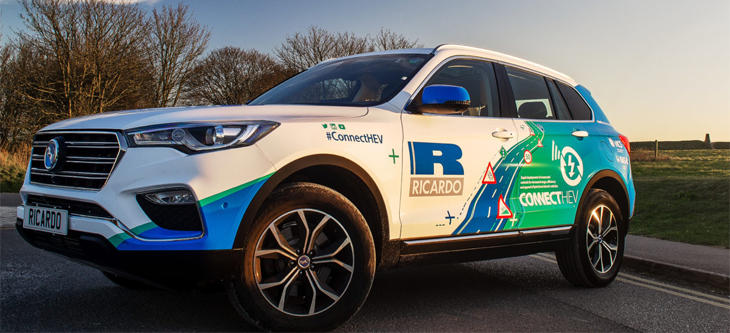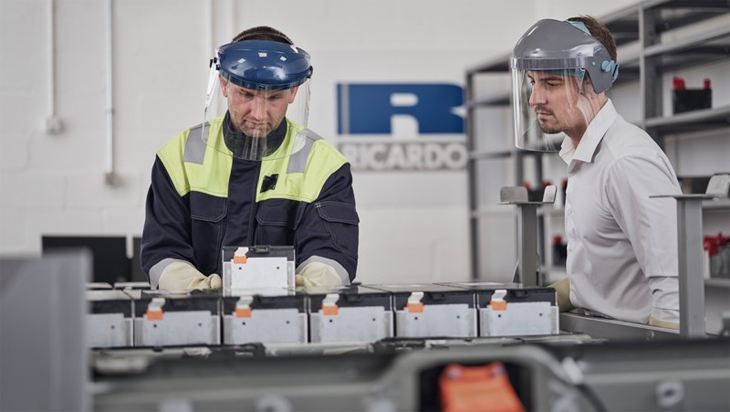Efficiency, integration, digital: engineering services streamline for success
Ricardo management offer Megan Lampinen the inside track on the company's new business focus and technology roadmap.
Ask any automotive player what they expected from 2020 and it would probably bear little resemblance to what’s played out over the past 11 months. But while the direction that this year has taken defied predictions, it has all the same proven a pivotal period for automotive businesses. Financial priorities have been reassessed and timelines adjusted while operations have been refined and workforces streamlined. The long-term vision for future mobility, meanwhile, remains relatively intact. The players that are pursuing it will be leaner, more agile and more focussed.
That’s particularly applicable to Ricardo, the UK-based engineering and environmental consultancy. The company’s now looking to put its core competence back in focus. “The industry has seen considerable uncertainty over the years, from the Dieselgate scandal to the wider transformation around technology,” says Stephen Dyke, Managing Director, Ricardo EMEA. “Ricardo diversified itself but potentially went too broad without the right depth.”
That all changes under the new focus. “We’re not going to be a connected and autonomous vehicle expert, we’re not going to challenge Google or Uber,” he tells Automotive World. We’re not going to do whole chassis, whole vehicle integration. We’re not going to try to rival some of the IT companies to be cyber experts.” So what will it be focussing on?
Emissions standards
“Much of our strategy is about clean, efficient, integrated propulsion systems that are energy vector agnostic,” Dyke explains. When it comes to meeting tightening emissions standards, there are multiple paths to pursue and Ricardo sees a role for numerous technologies down the line. Electrification—in a sustainable and cost-effective guise—will be a key pillar, whether that takes the form of a pure battery electric vehicle (EV) or a hybrid. Ricardo is currently building a new hybrid powertrain development facility at its Shoreham Technical Centre in the UK, which will also be the location of a hydrogen engine development facility. Hydrogen and de-fossilised fuels will also be key focal areas, particularly in applications where EVs may not prove technically viable.
“As we consider what it will take to arrive at a sustainable set of solutions for mobility and energy, we need to be looking across all of the various energy vectors,” emphasises Adrian Greaney, Director of Technology & Products—Ricardo Automotive & Industrial. “Electrification is not going to be the answer to everything. We need that alongside the hydrogen economy with de-fossilised fuels for those higher energy consuming sectors where the energy density of battery technology is not going to be a full answer.”
For all of these paths, Ricardo tackles the challenge from an integrated system perspective. It is not just how the technology is integrated within the vehicle but also how the propulsion system interacts with the charging network and the energy supply infrastructure. And how that can be done in a sustainable way. Integration also takes into account the merger of hardware and software in a single system. After all, emissions challenges aren’t just solved with electrification, hydrogen and de-fossilised fuel. Software and control systems can make a huge contribution.
While Ricardo’s automotive business has a strongly mechanical heritage, some of the biggest opportunities to optimise system performance sit at the software and control level.
“When we talk about integrated, we’re thinking about the mechanical elements together with the software, how they’re controlled and connected, how they use connected data to optimise the propulsion system,” says Greaney. Ricardo has showcased its modular Vehicle Integrated Control & Simulation (VICS) control software platform in its ConnectHEV vehicle demonstrator.

Digital engineering
The refreshed Ricardo vision also puts digital engineering at its core. This not only promises a faster time to market for new technology but also reduces risk and facilitates more agile project management. The approach covers anything from remote and virtual working to virtual product development. “In some cases, the virtual world is safer than the real world for decision making,” notes Dyke.
This is all the more pertinent today, as systems grow increasingly complex. “What we have here are really complex systems of systems; if we just continue to do things the traditional way, the time and testing required and the number of prototypes would exponentially increase,” Greaney explains. “We need that much more capable simulation to predict the real-world performance of these systems.”
The benefits of this approach were highlighted in a recent collaborate research project on virtual development and testing for batteries. Investigators were looking specifically at how to model battery behaviour in the real world to improve on their design and analysis. “That’s taken about half of the effort out of the development cycle from where we were at with battery development,” Greaney adds. Having this robust virtual representation of a system also brings ancillary benefits, spurring new innovations. Ricardo is currently looking into using those sophisticated battery ageing models in order to optimise battery management in the vehicle in conjunction with connected car data. “Then we could potentially improve range, reliability and even warranties,” he suggests. “The virtual environment is becoming the core for the development process as well as for many of the control aspects of the product.”
Ricardo has been busy forming partnerships to bolster its expertise in this area. It is in the process of forming a ‘deep relationship’ with a platform data analytics provider and is simultaneously looking to develop stronger data science capability internally.
An accelerant
While Ricardo has launched this more sharply defined focus in the midst of the pandemic, the work behind it and the initial momentum began long before any signs of the virus emerged. “We kicked this off in November before we could even imagine the transformational impact that COVID has had and continues to have,” says Dyke.
The motivation, he explains, was to secure the company’s long-term future in a competitive market. And for that, he pegs the following essentials: great people, great facilities, great technology and great processes and tools. Much of this was already in place, but needed “corralling together in a more focussed manner.” And in the end, it should position the company more strongly to weather the current challenges.

In some ways, COVID has proven an accelerator of the megatrends that were already in place, such as heightened regulatory pressure, market consolidation, less traditional outsourcing, decarbonisation, and technology uncertainty. “The market focus now is all about promoting a green bounce-back to the COVID situation, and that absolutely plays to our strategy,” points out Greaney. “For instance, the level of focus around hydrogen as a critical element alongside electrification has gathered momentum even in the last few months during the COVID situation.”
However, there’s still an industry-wide problem of economic viability. “It’s not just about developing the right environmental solutions; everyone is struggling with the economic viability,” he says. The use of a digital toolset in development can help with that. Improvements in powertrain efficiency also tie in with cost effectiveness, as they normally bring with them a cost benefit. For instance, if you improve efficiency, it means you need to carry less energy. The most expensive piece in an electrified vehicle is the battery. Even if there was some upfront costs, the end result is a smaller battery, which means less weight and therefore less power required to deliver the same vehicle performance. That in itself then reduces cost further.
“Understanding the many interactions between cost, environmental impact, performance, and how you optimise all of that with the hardware and the software plays to the pressures that our customers feel,” says Greaney. “The question is how to do all of this under the extreme economic pressure that everyone’s facing.”
To see the original version, visit: https://www.automotiveworld.com/articles/efficiency-integration-digital-engineering-services-streamline-for-success/








